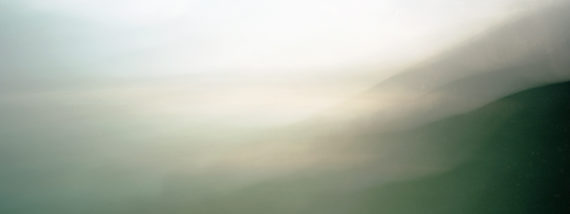Last night I attended my first workshop for my professional development bursary activity, bundle dyeing with local flowers and plant materials run by Babs Behan of Botanical Inks in association with Selvedge.
A large element of my practice involves walking through places to examine the rhythms and flows of the natural environments and of my own bodily movements through the space. Collecting objects, mostly natural materials, whilst I walk is a really important part of my practice. Collecting like this as a process is something I have been doing since long before I began to incorporate found objects within my work which I began doing a couple of years ago. My first experiments in using found objects were still very much located in my photographic practice, scanning the objects to explore them as micro and macro spaces, abstracting the forms by using them to create photograms in the darkroom. More recently I have been making lumen prints, placing plant materials on photographic paper under glass and leaving them for days or weeks to expose in sunlight. The substances within the plants and the reaction to the heat building up over time affected the photographic paper in really interesting ways creating organic patterns. I was drawn to the bundle dyeing workshop as a way to extract colour from natural materials in a way that is more environmentally conscious than working with photographic materials.
Bundle dying is a contemporary dye technique whereby natural materials are placed onto fabric which is then folded or rolled into a tight package. Steam is then used to transfer the colours from the plant into the fabric.
Babs demonstrated the process, explaining the different stages of preparing the fabric with mordant, selecting plant materials to use, folding techniques and steaming. The silk I dyed during the workshop was left to dry in my bathroom overnight and is now hung in my wardrobe. I will leave it here for around four weeks in order of the dyes to really embed themselves to encourage a stronger light-fastness. After this time I will be able to press the silk and wash away the remaining plant materials that are stuck to its surface.
Babs is so passionate about keeping her working process as ethical as possible, from the selection of fabric to the harvesting of plants and the final steaming processes. There are so many variables to the process and that, added to the variants that occur with using natural materials, the end results are highly unpredictable. I often work with processes where I give over my control of the final result to a process so for me, the method sits in well with my current practice.
Unexpectedly to me, the bundle dyeing method felt closely related to the photographic process. Placing objects on to a surface in order to record their impression in an abstracted way was similar to my previous work with photograms and lumen prints, just with very different results. For the workshop we used a hot steam bath in order to be able to produce results in a short time period, however, Babs recommends a cold approach, placing the bundle in a glass jar and allowing natural sunlight to create the heat energy required over a longer period of time. Sunlight is a key element of my practice and so I am looking forward to start trying this technique from my studio.
We had a wide range of fresh and dried flowers, food waste such as onion skins, powdered dye extracts including chlorophyll and weld, and dried mixtures with healing properties including camomile and mugwort. Babs shared her very conscious approach to selecting which plant materials to work with which we learnt was similar to an Indian tradition of Ayurvastra, a branch of the ancient Ayurveda system that I am familiar with from my yoga practice. This considers the healing properties of the plants used and also the symbolic associations we place on particular plants.
What I was also interested to learn was how much the dyes can speak of the environment from which the plant came from. The resulting colour can be affected by not only the physical make-up of the plant but also the soil it inhabited, the season in which it was harvested and the weather during the plant’s period of growth. I think this element will be the starting point for my own experiments following on from this workshop.
Botanical Inks run by Babs Behan is based in Bristol. http://www.botanicalinks.com/






